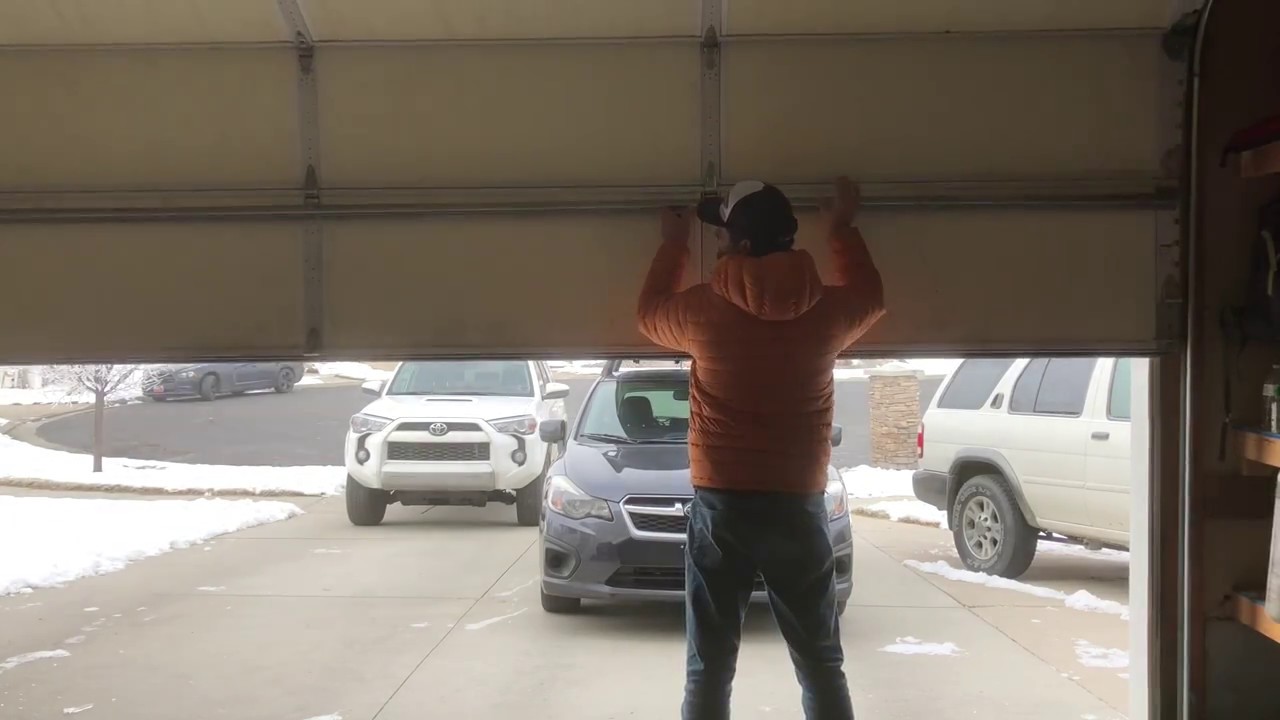

Articles
How To Open Garage Door With Broken Spring
Modified: August 20, 2024
"Learn how to open a garage door with a broken spring safely and efficiently. Read our informative articles for step-by-step instructions and expert tips."
(Many of the links in this article redirect to a specific reviewed product. Your purchase of these products through affiliate links helps to generate commission for Storables.com, at no extra cost. Learn more)
Introduction
Garage doors are an essential part of our daily lives, providing convenient access to our cars and additional storage space. However, a malfunctioning garage door can quickly become a major inconvenience, especially if the spring is broken. The garage door spring plays a crucial role in the operation of the door, supporting its weight and allowing for smooth opening and closing.
When the garage door spring breaks, it can be challenging to open the door manually, as the spring tension provides the necessary counterbalance. However, there are ways to safely open a garage door with a broken spring, allowing you to continue using your garage until the necessary repairs can be made.
In this article, we will guide you through the process of opening a garage door with a broken spring, highlighting various methods and safety precautions to ensure a smooth and secure experience.
Key Takeaways:
- Safety First
When dealing with a broken garage door spring, prioritize safety by disconnecting the opener, securing the door, wearing safety gear, and seeking professional help. Safety precautions are crucial to prevent accidents and ensure a smooth experience. - Professional Assistance
Seeking the expertise of a professional garage door technician is the most reliable and efficient method for handling a broken spring. Professionals have the knowledge, tools, and experience to ensure the safe and effective operation of your garage door.
Read more: How To Open A Broken Door Lock
Understanding the Role of Garage Door Springs
Before we dive into the methods of opening a garage door with a broken spring, it is important to understand the significance of the springs in the overall function of the door. Garage doors typically use two types of springs: torsion springs and extension springs.
Torsion springs are mounted above the garage door and exert a twisting force to counterbalance the weight of the door throughout its movement. Extension springs, on the other hand, are located on either side of the door and stretch or extend to support the door’s weight.
The springs store energy when the door is in the closed position and release it when the door is opened. This energy transfer allows for smooth and controlled movement of the garage door, making it easy to lift or close.
Identifying a Broken Garage Door Spring
When a garage door spring breaks, there are a few common signs to look out for:
- The door is significantly heavier and harder to lift manually.
- The door hangs unevenly or appears crooked.
- You hear a loud snapping sound when attempting to open the door.
- The cables or pulleys appear loose or disconnected.
If you have noticed any of these signs, it is likely that you have a broken garage door spring. In such cases, it is essential to exercise caution and avoid using the automatic opener until the spring is repaired or replaced.
Safety Precautions before Attempting to Open a Garage Door with a Broken Spring
Working with a garage door can be dangerous, especially when dealing with a broken spring. Before attempting to open a garage door with a broken spring, it is crucial to follow these safety precautions:
- Disconnect the automatic opener: Make sure to disconnect the garage door opener from power to prevent unintentional activation while working on the door.
- Secure the door: Use clamps or vise grips to secure the door in place and prevent it from unexpectedly falling or closing.
- Wear safety gear: Put on safety glasses, gloves, and sturdy footwear to protect yourself from any potential accidents.
- Do not attempt solo: Opening a garage door with a broken spring can be challenging and potentially dangerous. It is recommended to have a helper assist you or seek professional help if needed.
By taking these safety precautions, you can minimize the risks associated with working on a garage door with a broken spring and ensure a safe experience.
Key Takeaways:
- Safety First
When dealing with a broken garage door spring, prioritize safety by disconnecting the opener, securing the door, wearing safety gear, and seeking professional help. Safety precautions are crucial to prevent accidents and ensure a smooth experience. - Professional Assistance
Seeking the expertise of a professional garage door technician is the most reliable and efficient method for handling a broken spring. Professionals have the knowledge, tools, and experience to ensure the safe and effective operation of your garage door.
Read more: How To Open A Broken Door Lock
Understanding the Role of Garage Door Springs
Garage door springs play a crucial role in the safe operation of your garage door. They are responsible for supporting the weight of the door, counteracting the force of gravity, and allowing for smooth and effortless opening and closing.
There are two main types of garage door springs: torsion springs and extension springs.
Read more: How To Rewind A Garage Door Spring
Torsion Springs:
Torsion springs are typically used in modern garage door systems and are mounted horizontally above the door. They work by twisting or coiling up tightly when the door is closed, storing energy in the process. When you open the door, that stored energy is released, helping to lift the door with ease.
Torsion springs are known for their durability and reliability. They are designed to withstand a high number of cycles (the number of times the door opens and closes) and can last for many years if properly maintained. However, due to the high tension they are under, they can be dangerous to work with and should only be handled by trained professionals.
Extension Springs:
Extension springs are typically found on older garage door systems, although some newer models still use them. They are located on either side of the door tracks and stretch or extend when the door is closed. Similar to torsion springs, extension springs store energy when the door is closed and release it when opening, assisting in lifting the weight of the door.
Unlike torsion springs, extension springs are more visible and easier to replace. However, they are generally less durable and have a shorter lifespan compared to torsion springs. They are also under high tension and should be handled with caution to prevent injury.
Signs of a Broken Garage Door Spring:
A broken garage door spring can be easily identified by visual inspection and certain signs that indicate a malfunction. Here are some common signs of a broken garage door spring:
- The garage door is heavier and harder to lift manually.
- The door hangs unevenly or appears crooked when opening or closing.
- You hear a loud snapping sound when trying to operate the door.
- The cables or pulleys connected to the springs look loose or detached.
If you notice any of these signs, it is essential to refrain from using the garage door as operating it with a broken spring can cause further damage and potential safety hazards.
The Importance of Regular Maintenance:
To ensure the longevity and optimal performance of your garage door springs, regular maintenance is crucial. This includes periodic inspections, lubrication of the springs and other moving parts, and addressing any signs of wear or damage promptly.
It is recommended to have a professional technician perform maintenance and repairs on your garage door springs. They have the knowledge, experience, and specialized tools necessary to handle the springs safely and effectively.
Understanding the essential role of garage door springs and being aware of the signs of a broken spring allows you to take necessary precautions, seek professional assistance when needed, and ensure the safe and reliable operation of your garage door system.
Identifying a Broken Garage Door Spring
Your garage door operates smoothly with the help of the springs. However, over time, these springs can experience wear and tear, eventually leading to a broken or malfunctioning state. It is important to be able to identify the signs of a broken garage door spring to address the issue promptly and ensure the safety and functionality of your garage door.
Visual Inspection:
One of the easiest ways to identify a broken garage door spring is through visual inspection. Start by closing the garage door and examining the springs. Look for any visible signs of damage, such as cracks, gaps, or frayed cables. Pay attention to any areas that appear stretched or stretched unevenly, as these indicate a compromised spring.
Door Balance:
Another way to determine if you have a broken garage door spring is by testing the balance of the door. Disconnect the opener from the door and manually attempt to lift the door about halfway. If the door stays in place, it is likely a sign that the springs are functioning correctly. However, if the door is difficult to lift or immediately falls when released, this could indicate a broken spring.
Noise and Movement:
A broken garage door spring may produce noticeable sounds or movement when attempting to operate the door. Listen for loud snapping or banging sounds when opening or closing the door. These noises can indicate a spring has either broken or become detached. Additionally, observe any jerky or uneven movement of the door as it opens or closes, as this can be a sign of a malfunctioning spring.
Read more: How To Open A Chamberlain Garage Door Opener
Uneven Door Height:
If you notice that the garage door appears crooked or hangs unevenly when in the closed position, it could be an indication of a broken or unbalanced spring. Take a step back and observe if one side of the door is higher than the other. This asymmetry suggests that the spring on the lower side may not be providing the necessary support and could be compromised.
Professional Assessment:
If you are unsure about the state of your garage door springs or suspect a broken spring but can’t visually identify the problem, it is advisable to seek the assistance of a professional garage door technician. They possess the expertise and specialized tools to accurately assess the condition of the springs and recommend the appropriate course of action.
Remember, dealing with garage door springs can be dangerous, as they are tightly wound under high tension. It is crucial to exercise caution and prioritize safety when inspecting or attempting to repair the springs.
By being vigilant and proactive in identifying a broken garage door spring, you can address the issue promptly, ensuring the functionality and longevity of your garage door system. Regular inspections and maintenance can prevent unexpected malfunctions and save you from costly repairs down the line.
Safety Precautions before Attempting to Open a Garage Door with a Broken Spring
When faced with a broken garage door spring, it is important to prioritize safety before attempting any manual operation of the door. Dealing with a broken spring can be hazardous, as it can cause the door to be unbalanced, heavy, and potentially unstable. To ensure your safety and prevent further damage, follow these essential safety precautions:
Disconnect the Automatic Opener:
Prior to attempting any manual operation of the garage door, it is crucial to disconnect the automatic opener from power. This will prevent any unintentional activation while you are working on the door. Most garage door openers have a manual release cord or switch that can be disengaged to disconnect the opener. Consult your owner’s manual for specific instructions on how to do this for your particular model.
Read more: How Much Is A Garage Door Opener
Secure the Door:
After disconnecting the opener, make sure to properly secure the garage door. Use clamps, vise grips, or locking pliers to hold the door in place and prevent it from unexpectedly falling or closing while you are working on it. This will ensure your safety and avoid any potential accidents or injuries.
Wear Safety Gear:
When handling a broken garage door spring, it is essential to protect yourself by wearing appropriate safety gear. Put on safety glasses or goggles to shield your eyes from any flying debris or potential splinters. Wear gloves to protect your hands from sharp edges or pinch points. Additionally, wear sturdy footwear to provide stability and prevent any accidental slips or falls.
Do Not Attempt Solo:
Opening a garage door with a broken spring can be challenging and potentially dangerous, especially if the door is heavy or unbalanced. It is advisable to have a helper assist you during the process. They can provide support, help with lifting, and ensure that the door is properly controlled. If you are unsure about your ability to safely handle the door, or if the spring is particularly large or complex, it is recommended to seek professional assistance instead.
Use Caution when Manual Operation:
When manually opening a garage door with a broken spring, exercise caution and be mindful of your surroundings. Move slowly and steadily, ensuring you have a firm grip on the door. Avoid sudden jerks or movements that could destabilize the door. Stay vigilant for any signs of further damage or potential hazards, such as loose cables or hinges.
It is important to remember that working with a broken garage door spring can be risky, and it is always best to rely on professional help if you are uncertain or uncomfortable with the task. Professional technicians have the knowledge, experience, and tools necessary to safely handle broken springs and make the necessary repairs.
By following these safety precautions, you can minimize the risks associated with handling a broken garage door spring and ensure a safe experience while attempting to manually open or operate the door.
Read more: How Much To Replace Garage Door Spring
Method 1: Using the Emergency Release Cord
When faced with a broken garage door spring, one of the most common methods to manually open the door is by utilizing the emergency release cord. The emergency release cord is a red handle attached to a rope or cord that is typically located near the garage door opener motor or on the garage door track.
Step 1: Locate the Emergency Release Cord
Locate the emergency release cord in your garage. It is usually a red handle attached to a rope or cord that hangs down from the garage door opener motor or is positioned along the garage door track. The cord may be tucked away or concealed, so it may require some searching to find it.
Step 2: Pull the Emergency Release Cord
Once you have located the emergency release cord, firmly grip the handle and pull it straight down. This will disengage the garage door opener from the door, allowing you to manually operate the door independently of the opener.
Step 3: Lift the Garage Door
With the emergency release cord pulled down, you can now manually lift the garage door. It may be heavy, so use caution and proper lifting techniques. Lift the door evenly, with both hands on either side, to prevent any unbalanced movement.
Read more: How Does A Garage Door Spring Work
Step 4: Support the Door
Once the door is lifted, it is important to support it to prevent it from quickly falling or crashing down. Use a vice grip, clamp, or similar device to secure the door in an open position, or have a helper hold onto the door while you perform any necessary tasks.
Step 5: Move the Door Slowly and Carefully
When moving or closing the door, do so slowly and carefully to avoid any sudden movements or accidents. Take note of any resistance or unusual sounds, as they may indicate other issues, such as a damaged track or hinge.
It is important to note that while the emergency release cord allows you to manually operate the garage door, it does not address the underlying issue of the broken spring. As such, it is recommended to seek professional assistance to inspect and repair the broken spring as soon as possible.
By using the emergency release cord, you can safely open your garage door with a broken spring and gain access to your garage. However, exercise caution and be aware that the door may be heavy and unbalanced, making it necessary to provide proper support and avoid any potential safety risks.
Method 2: Using a Helper or a Pry Bar
If you find yourself dealing with a broken garage door spring and don’t have access to the emergency release cord, another method to manually open the door is by enlisting the help of a helper or utilizing a pry bar. This method requires a bit more strength and coordination but can be effective in situations where the emergency release cord is not accessible.
Step 1: Assess the Situation
Before attempting this method, assess the condition of the garage door and the broken spring. Make sure there are no visible obstructions or damaged components that could impede the door’s movement. Ensure that you and your helper are wearing the necessary safety gear, including gloves and eye protection.
Read more: How To Adjust Spring Tension On Garage Door
Step 2: Position your Helper
Position your helper on one side of the door, opposite to where the broken spring is located. Make sure your helper can firmly grip the bottom of the door with both hands. It is essential to have good communication and coordination with your helper throughout the process.
Step 3: Pry the Door Open
Using a sturdy pry bar or a similar tool, carefully insert it into the gap between the bottom of the garage door and the ground. Apply gentle, upward force to lift the door slightly, relieving some of the pressure from the broken spring. Coordinate with your helper to lift and support the door as you pry it open.
Step 4: Lift the Door with your Helper
With the door slightly lifted, instruct your helper to use their strength to lift the door while you continue to provide support and guide its movement. Lift the door evenly and avoid excessive force or sudden movements to prevent any accidents or additional damage.
Step 5: Secure the Door in an Open Position
Once the door is open, use clamps or locking pliers to secure it in place. This will prevent the door from closing unexpectedly while you attend to any necessary tasks or seek professional assistance for spring repair or replacement.
Remember to exercise caution throughout the process, as a broken spring can cause the door to be heavy and unbalanced. If you encounter any difficulties or are unsure about your ability to safely perform this method, it is recommended to seek professional help instead.
Using a helper or a pry bar can provide an alternative solution for opening a garage door with a broken spring when the emergency release cord is not accessible. However, it is important to prioritize safety, coordinate movements with your helper, and address the underlying issue of the broken spring as soon as possible to ensure the proper functioning of your garage door.
Method 3: Utilizing a Torsion Spring System
If your garage door is equipped with a torsion spring system and one of the springs is broken, it is possible to open the door manually using specific techniques. However, it is essential to note that handling torsion springs can be dangerous due to the high tension they are under. It is recommended to proceed with caution or seek the assistance of a professional garage door technician.
Step 1: Disconnect the Garage Door Opener
Before attempting to open the garage door manually, ensure that the automatic opener is disconnected from power to prevent any unintentional activation. This can usually be done by pulling the emergency release cord or following the instructions in your owner’s manual.
Step 2: Locate the Broken Torsion Spring
Identify the broken torsion spring. Torsion springs are usually mounted above the garage door, horizontal to the door opening. Locate the broken spring and exercise caution when working in its vicinity.
Step 3: Determine the Direction of Winding
Determine the direction of winding for the torsion spring. Torsion springs are wound in either a clockwise (right-hand) or counterclockwise (left-hand) direction, depending on the specific setup of the door. Understanding the direction of winding is crucial for proper handling and opening of the door.
Read more: How To Measure Garage Door Torsion Spring
Step 4: Secure the Garage Door
Secure the garage door in an open position using vice grips or clamps to prevent it from closing unexpectedly while you work on it. This step ensures your safety and allows you to focus on properly handling the torsion spring.
Step 5: Turn the Unbroken Torsion Spring
If the door has two torsion springs, with one being broken and the other intact, you can manually turn the unbroken spring to alleviate some of the tension on the door. Use a winding bar inserted into one of the winding cone holes and turn it slowly in the direction of winding (either clockwise or counterclockwise) according to the specific setup of your door.
Step 6: Lift the Garage Door
With the tension reduced by turning the unbroken torsion spring, you can now manually lift the garage door. Use proper lifting techniques, such as bending your knees and engaging your leg muscles, to minimize strain on your back.
Step 7: Lower the Garage Door with Control
Lower the garage door with control once you have safely lifted it. Use caution and be aware of any remaining tension from the broken spring. Lower the door slowly and smoothly, avoiding sudden movements or dropping the door.
It is crucial to remember that dealing with torsion springs can be dangerous and requires a certain level of expertise. If you are unsure or uncomfortable with the manual operation of the door, it is strongly recommended to seek the assistance of a professional garage door technician.
Utilizing a torsion spring system to manually open a garage door with a broken spring can be a complex and potentially hazardous task. By following these steps carefully and prioritizing safety, you can safely access your garage while waiting for professional spring repair or replacement.
Read more: How To Set A Garage Door Opener
Method 4: Seeking Professional Assistance
Dealing with a broken garage door spring can be challenging and potentially dangerous, especially if you are not familiar with the intricacies of garage door systems. As such, one of the best methods for opening a garage door with a broken spring is to seek the assistance of a professional garage door technician. Here’s why:
Expertise and Experience:
Professional garage door technicians have the necessary expertise and experience to handle broken garage door springs effectively. They are trained in the proper techniques for safely opening and repairing garage doors, including those with broken springs. They understand the complexities of different spring systems, allowing them to accurately diagnose the issue and provide the appropriate solution.
Knowledge of Safety Precautions:
Garage door technicians are well-versed in the safety precautions required when working with broken springs. They understand the potential hazards involved, such as the high tension of the springs and the risk of injury. By entrusting the task to a professional, you can ensure that the necessary safety measures are taken, minimizing the risk of accidents or further damage.
Access to Proper Tools and Equipment:
Professional technicians have access to specialized tools and equipment specifically designed for working on garage doors. They have the proper winding bars, clamps, and other tools necessary to safely handle broken springs. This enables them to perform the job efficiently and effectively, ensuring optimal results and preventing any additional complications.
Read more: How To Fix Garage Door Opener
Comprehensive Repair and Maintenance:
When you hire a professional garage door technician, you not only get assistance in opening the door with a broken spring, but you also benefit from a comprehensive repair and maintenance service. Technicians can inspect the entire garage door system, identify any other issues or potential problems, and provide the necessary repairs or replacements. This ensures that your garage door operates smoothly and remains in good working condition for an extended period.
Time and Cost Efficiency:
While attempting to open a garage door with a broken spring on your own might seem like a cost-effective approach, it can potentially lead to more significant problems and costly repairs if not handled properly. By seeking professional assistance from the beginning, you can save time, prevent further damage, and potentially minimize repair costs in the long run.
Opening a garage door with a broken spring is a task best left to professionals. They possess the knowledge, skills, and tools required to handle the situation safely and effectively. By engaging their services, you can ensure the proper function and longevity of your garage door, while prioritizing the safety of yourself and your property.
Conclusion
Dealing with a broken garage door spring can be a frustrating and potentially hazardous situation. However, with the right knowledge and techniques, you can safely open your garage door and regain access to your space. In this article, we have explored four methods to open a garage door with a broken spring.
The first method involved using the emergency release cord, which allows you to disengage the garage door opener and manually lift the door. This method is the most common and straightforward solution, provided the emergency release cord is easily accessible.
The second method involved enlisting the help of a helper or using a pry bar to manually lift the garage door. This method requires coordination and strength but can be effective if the emergency release cord is not accessible or if alternative solutions are needed.
The third method discussed leveraging a torsion spring system to lift the garage door manually. This method requires caution and expertise due to the high tension of the springs. It is advisable to seek professional assistance when dealing with torsion springs.
Lastly, seeking professional assistance is always a reliable and recommended method. Garage door technicians have the expertise, experience, and proper tools to safely handle broken springs, diagnose other potential issues, and provide comprehensive repairs and maintenance.
It is important to prioritize safety when dealing with a broken garage door spring. This includes disconnecting the automatic opener, securing the door, wearing safety gear, and seeking help when needed. Remember, attempting to repair or replace a broken spring without adequate knowledge and experience can lead to accidents and further damage.
In conclusion, if you encounter a broken garage door spring, evaluate the situation, consider the available methods, and prioritize your safety. Depending on the accessibility of the emergency release cord, your preference, and the expertise required, choose the appropriate method for opening the door. If unsure, it is always wise to seek the assistance of a professional garage door technician to ensure the safety, efficiency, and proper functionality of your garage door system.
Frequently Asked Questions about How To Open Garage Door With Broken Spring
Was this page helpful?
At Storables.com, we guarantee accurate and reliable information. Our content, validated by Expert Board Contributors, is crafted following stringent Editorial Policies. We're committed to providing you with well-researched, expert-backed insights for all your informational needs.
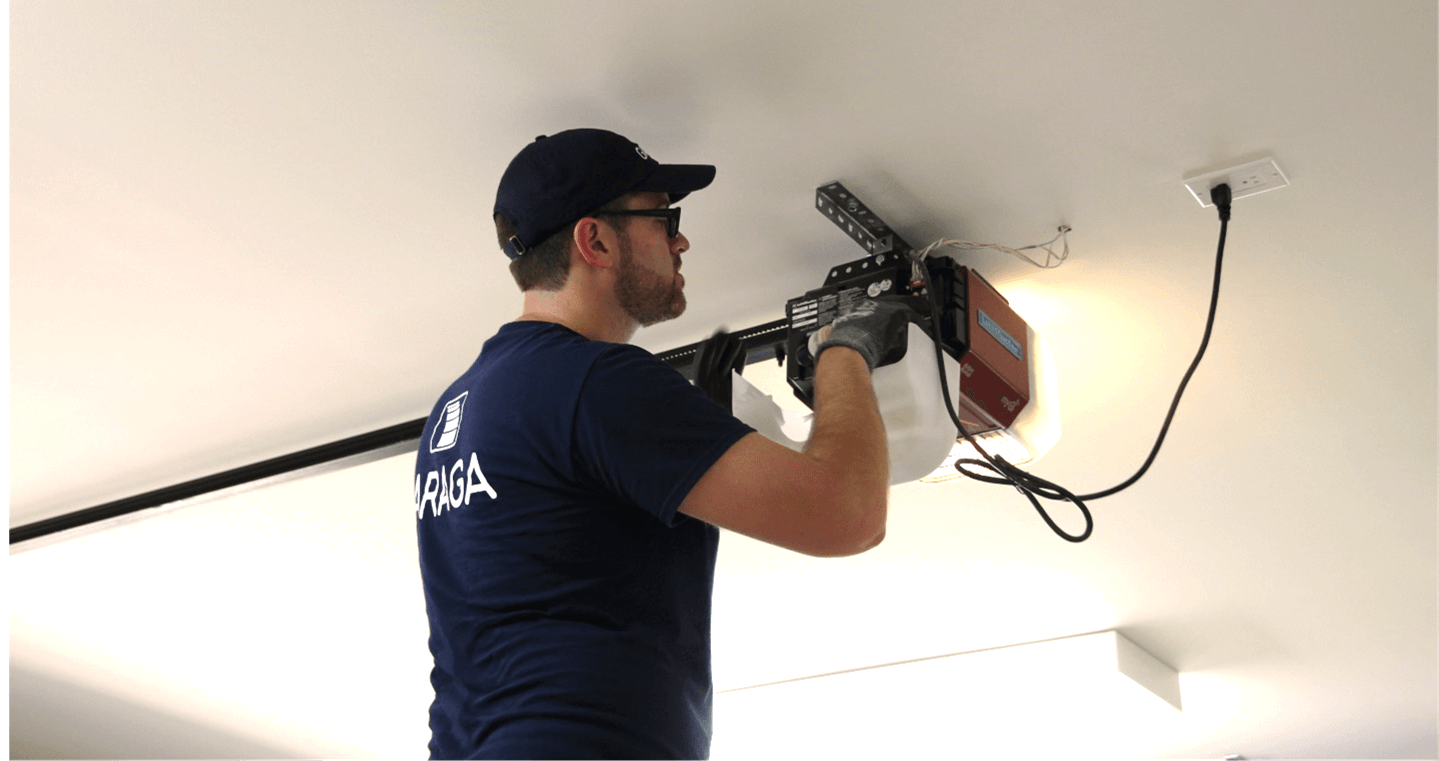
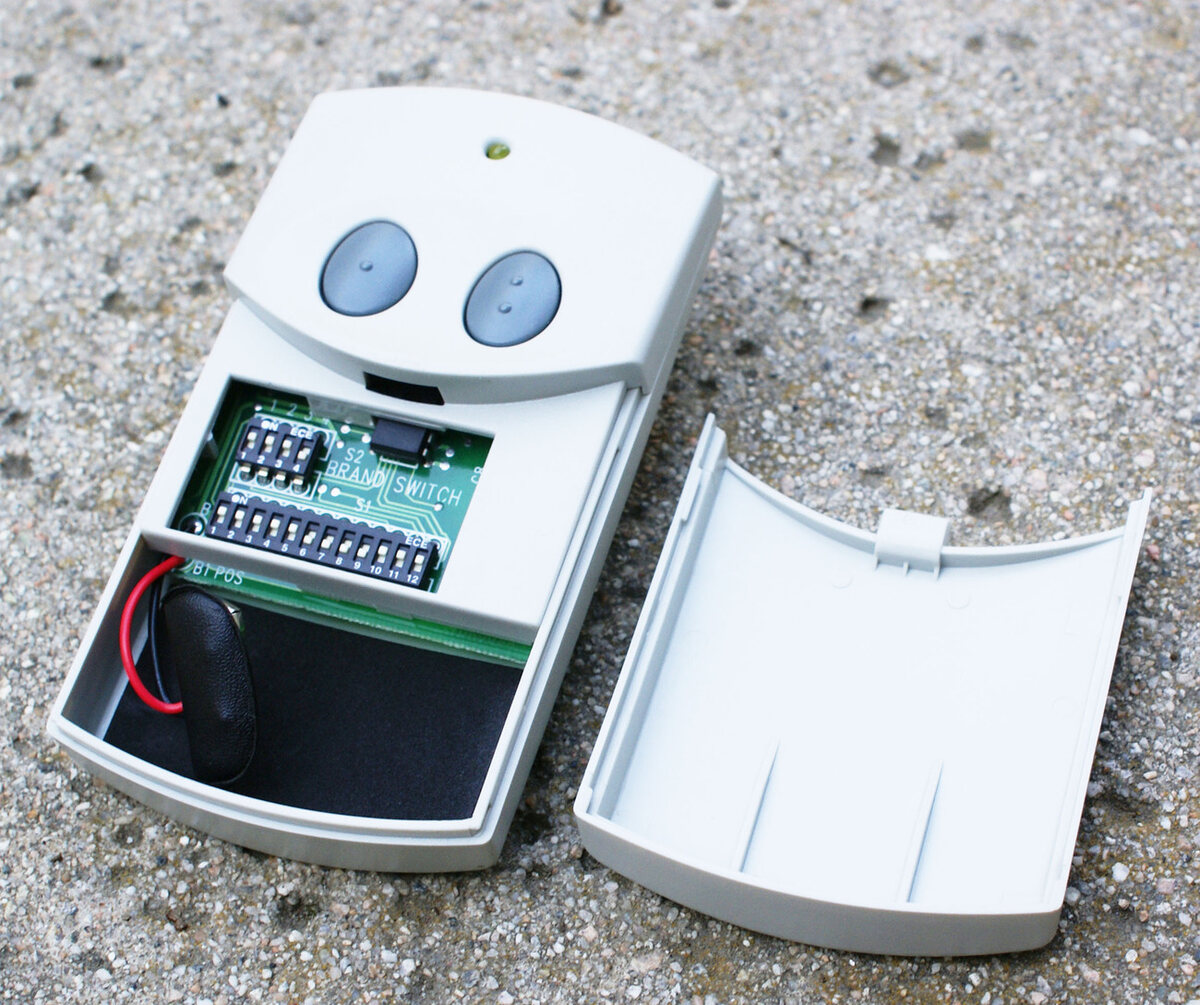
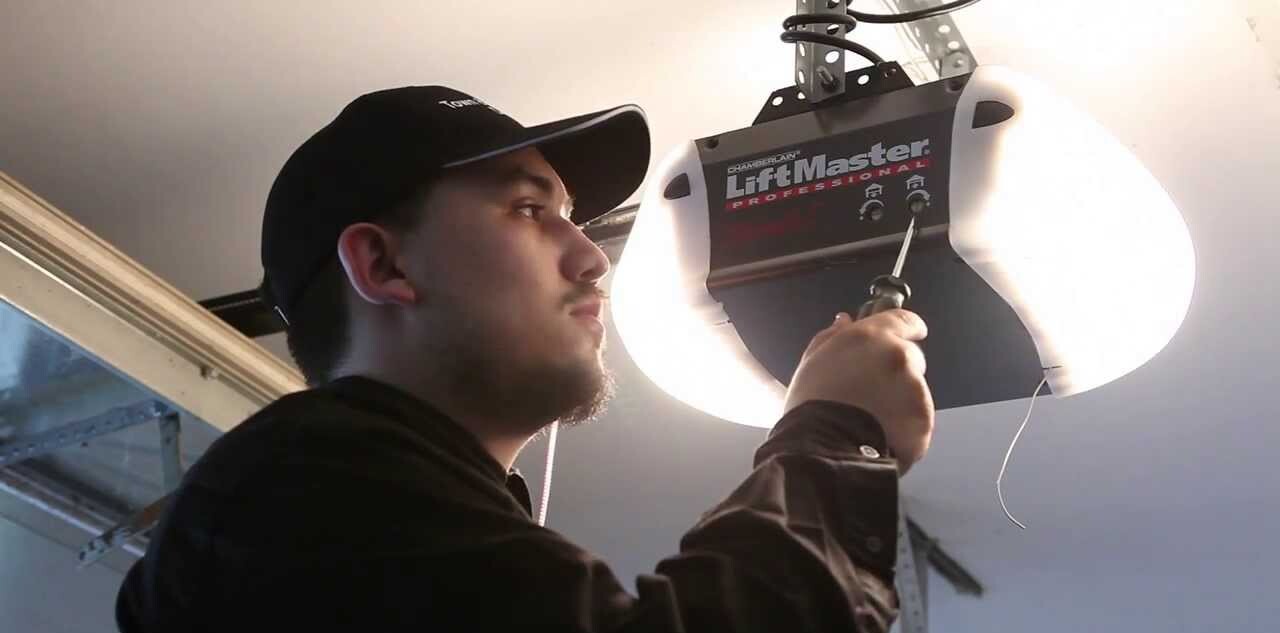
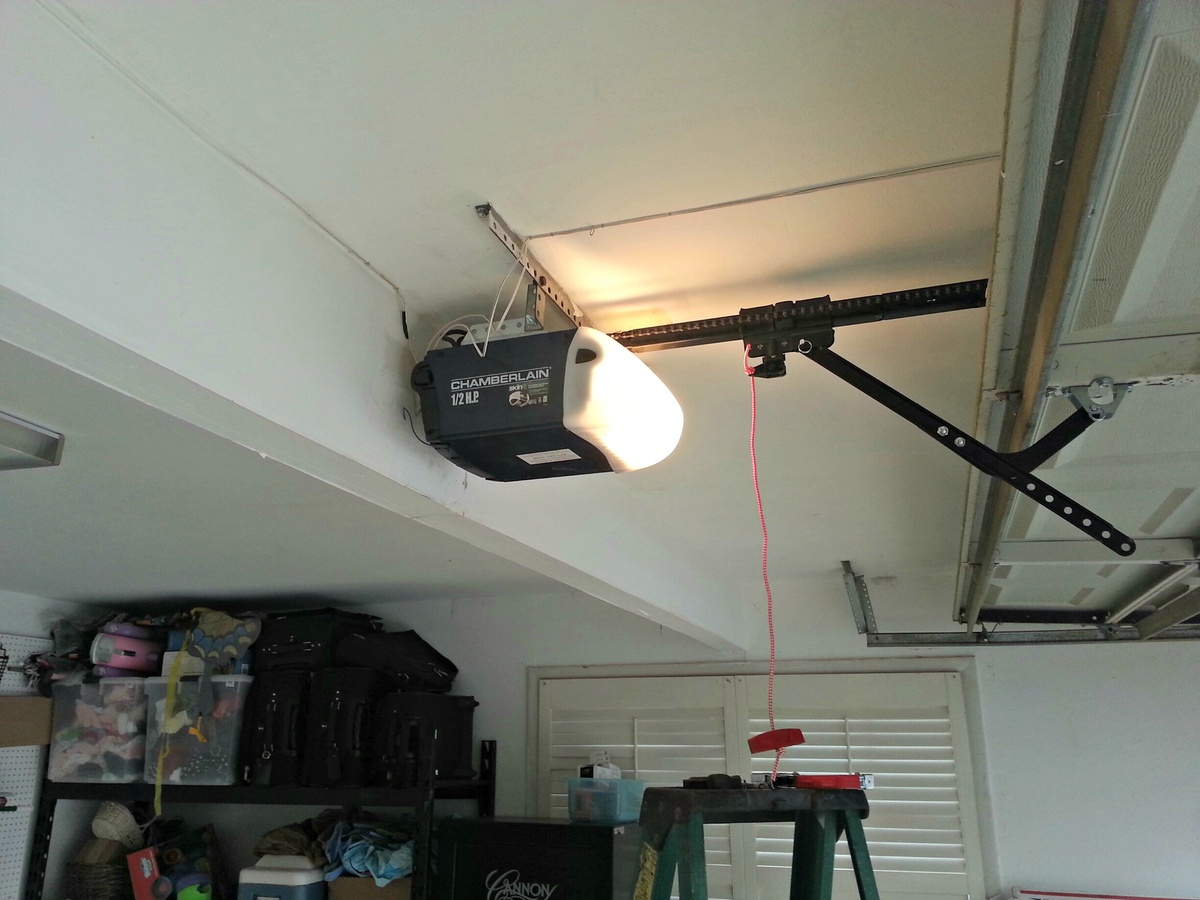

0 thoughts on “How To Open Garage Door With Broken Spring”